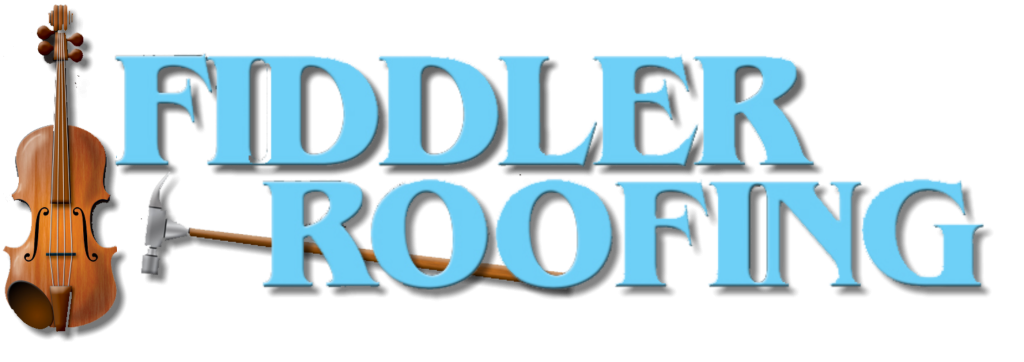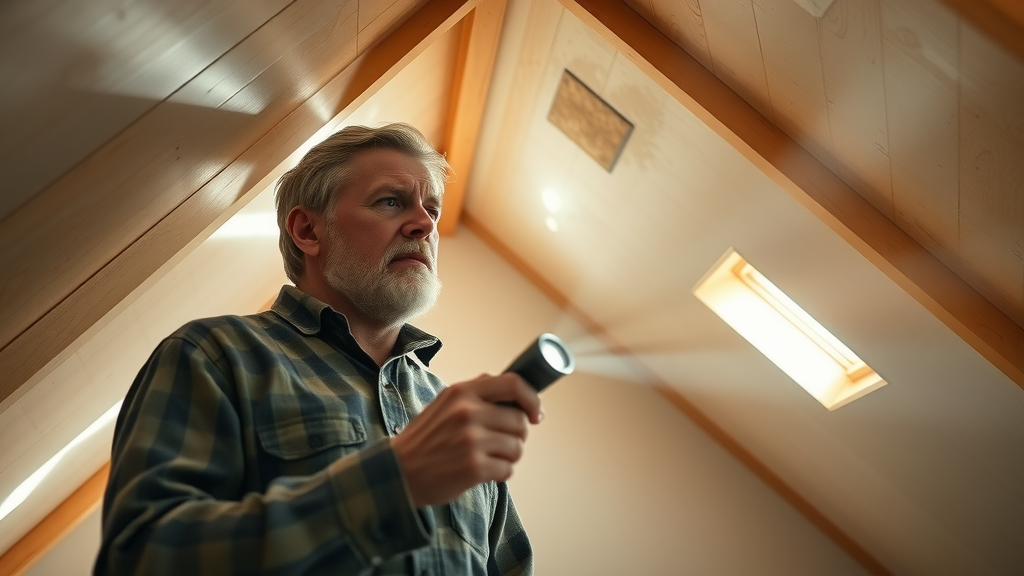When water shows up inside your home, it’s easy to think the leak is directly above the stain. But most roof leaks are trickier than that. Water can travel along rafters, nails, or flashing before making itself visible. That’s why finding the true source of a leak takes experience, patience, and a forward-thinking approach.
— John Petrozzi, Owner of Fiddler Roofing
What You’ll Learn About Roof Leaks and Leak Detection
-
How to identify signs of roof leaks indoors and outdoors
-
The most common causes of leaky roofs and how to spot them
-
Step-by-step methods for tracing the true source of roof leaks
-
Prevention tips to avoid recurring roof leak issues
-
When to call a professional for roof leaks
Did you know over 75% of roof leaks aren’t caused by missing shingles? In Western New York, most leaks happen because water finds elaborate, hidden paths into your home, not just from an obvious problem on your shingle roof. Understanding roof leaks means thinking beyond the surface—by looking for warning signs inside, uncovering hidden weak spots, and anticipating how our unique weather patterns in Buffalo & Niagara make leaks trickier to detect. This comprehensive guide arms you with practical, forward-thinking methods to pinpoint, solve, and prevent frustrating roof leaks before they lead to costly water damage.
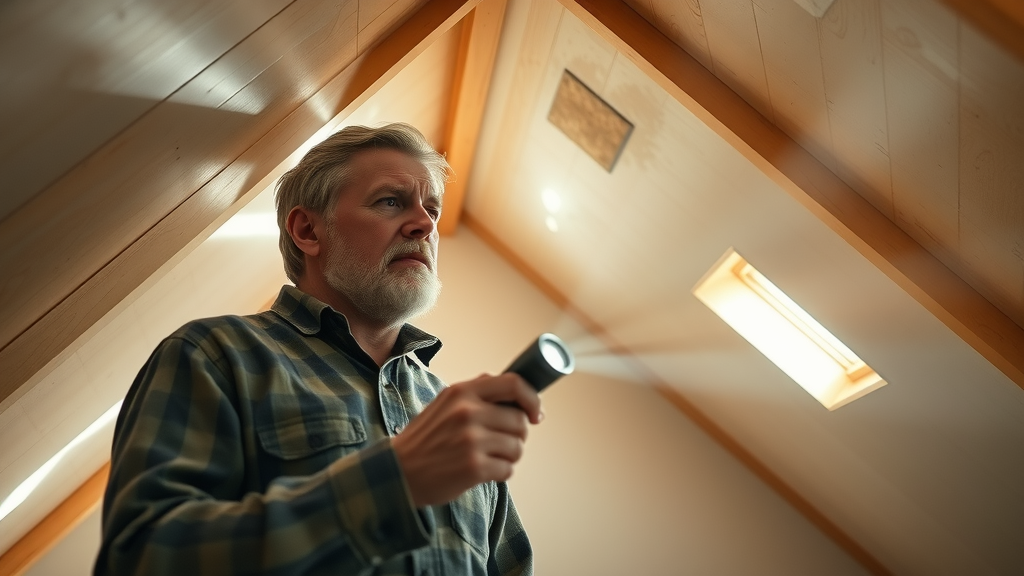
Roof Leaks Aren’t Always Where They Seem: Surprising Statistics
Over 75% of roof leaks in Western New York are caused by something other than missing shingles. Early detection is essential to prevent major repairs.
The Path of Water in Roof Leaks
-
Ceiling stains are rarely directly below the source: Water from a roof leak may travel several feet before appearing as a stain on the ceiling below.
-
Water can travel along rafters and flashing before becoming visible: Rafters, roofing nails, and flashing can guide water horizontally or diagonally from the initial entry point to a distant corner of a room.
-
Leaks may appear after delays or only during certain weather conditions: Tricky leaks routinely manifest hours or even days after a heavy rain or during specific wind-driven storms, complicating roof leak diagnosis.
Roof leaks can be deceptive, making your hunt for the true source of a roof leak a challenging task. Water might show up inside your home long after the storm passes or far from where the actual roof damage occurred. Detecting roof leaks early, before extensive water stains or structural issues develop, depends on understanding these hidden water pathways. Mastering these principles will save you both time and repairs.
Step One: Start Indoors When Your Roof is Leaking
Identifying Interior Signs of a Roof Leak
-
Look for damp insulation or darkened attic timbers: In the attic, areas with damp insulation or wood that appears darker than its surroundings suggest moisture is traveling from above. These warning signs often appear first—sometimes weeks before you notice a ceiling drip or water stain in your living space.
-
Search for soft drywall, bubbling paint, or mold odors: Bubbling paint, mushy drywall, or musty odors pinpoint where water penetrates your home’s barrier. Even if you don’t see an active leak, these symptoms mean a roof leak might be silently growing.
-
Use moisture meters to verify hidden seepage: A handheld digital moisture meter can quickly spot unseen wetness. Run it along suspicious ceiling areas, window trim, and attic floors—an essential step for confirming a leaking roof before attempting a repair.
Begin every roof leak investigation from the inside to effectively detect where your roof is leaking. Grab a flashlight and head into the attic after a rain: feel for wet insulation, check for water stains or drips along rafters, and don’t ignore a musty smell. Hidden leaks are often detected by touch or odor before any visible water stain appears. If available, a moisture meter—like those found at most hardware stores—takes the guesswork out of identifying damp spots in ceilings or walls. Identifying these early clues leads you toward the real source and prevents more serious water damage down the road.
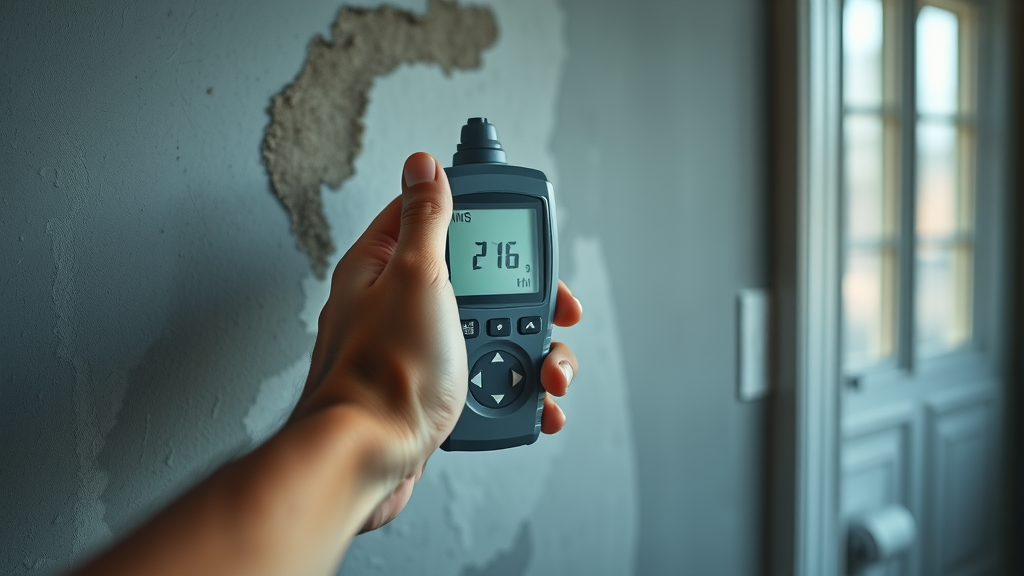
Think Beyond the Shingles: Causes of Leaky Roofs Beyond Damaged Shingle
Ventilation and Condensation Issues That Mimic Roof Leaks
-
Poor bathroom fan venting leads to attic condensation: If your bathroom fan vents into the attic—rather than outside—it dumps moist air under the roof. This raises attic humidity, often creating condensation that looks just like a roof leak.
-
Unchecked humidifiers and inadequate roof ventilation contribute: Overactive humidifiers or blocked/undersized attic vents trap moisture, creating “phantom” leaks as water collects and drips during cold snaps or seasonal changes.
-
Attic condensation can cause ceiling stains without a roof breach: Not all leaky roof problems point to failed shingles or missing flashings; standing water in attics can originate from poor air circulation alone. Regularly check your attic during winter for these signs.
Many homeowners are surprised to learn that roof leaks can originate from inside the home as much as outside. Poorly vented bathroom fans and blocked soffit or ridge vents can saturate attic air with humidity, causing condensation that mimics a classic roof leak. Before replacing a shingle or adding roof sealant, rule out these common ventilation and condensation issues—they’re major contributors to “leaks” that aren’t from roofing failures at all.
Proper ventilation is a critical, yet often overlooked, factor in preventing roof leaks and moisture problems. For a deeper dive into how optimizing airflow can protect your home, explore our guide on expert roofing ventilation services for optimal airflow and discover practical solutions for long-term roof health.
When to Suspect a Damaged Shingle May Be the Culprit
Damaged shingles aren’t the only reason your roof is leaking – look for attic leaks from inside as well.
That said, damaged shingle issues remain a leading cause of roof leaks—especially after strong wind, hail, or heavy rain. If you notice granule loss, cracked, curled, or missing shingles (or pieces found on your lawn after a storm), it’s time to check for water intrusion nearby. Even a single torn or missing shingle can create a problem area where water seeps beneath your roof’s waterproof layer. Other warning signs of a shingle roof problem include discolored interior ceilings or streaks down exterior siding. In these cases, don’t delay—address the damaged area before small leaks grow larger. If you can’t confidently assess the problem, call a professional roof expert to perform a thorough roof leak inspection and recommend safe repairs.
Inspecting Weak Spots: Focus Areas When Your Roof is Leaking
Plumbing Vents and Flashings – A Major Roof Leak Source
-
Rubber boot flashings dry-rot and crack with age: Roof flashings—especially flexible rubber boots around vent pipes—often deteriorate decades before shingles do. Cracked, split, or curled boots allow water to run down the outside of pipes and inside your attic insulation.
-
Check caulking and seals around the base of vents: Years of temperature swings cause caulk and sealant around plumbing penetrations to shrink or separate, creating mini “funnels” for leaks.
-
Upgrade to metal or lifetime boots for preventative care: When replacing vent boots, consider modern, durable materials designed to withstand sun, freeze-thaw cycles, and persistent wear and tear—an inexpensive upgrade that can prevent ongoing problems.
Plumbing vent pipes and roof flashings are frequent leak entry points, even on otherwise good condition homes. Inspect the area around each vent pipe at least once a year, particularly after winter or heavy wind. If you notice deteriorated rubber, cracked caulking, or visible mold—take action quickly. Proper repairs may involve replacing the flashing, using high-quality roofing cement, or sealing with a durable roof sealant. Professional roof specialists prefer metal or lifetime plastic boots for lasting protection.
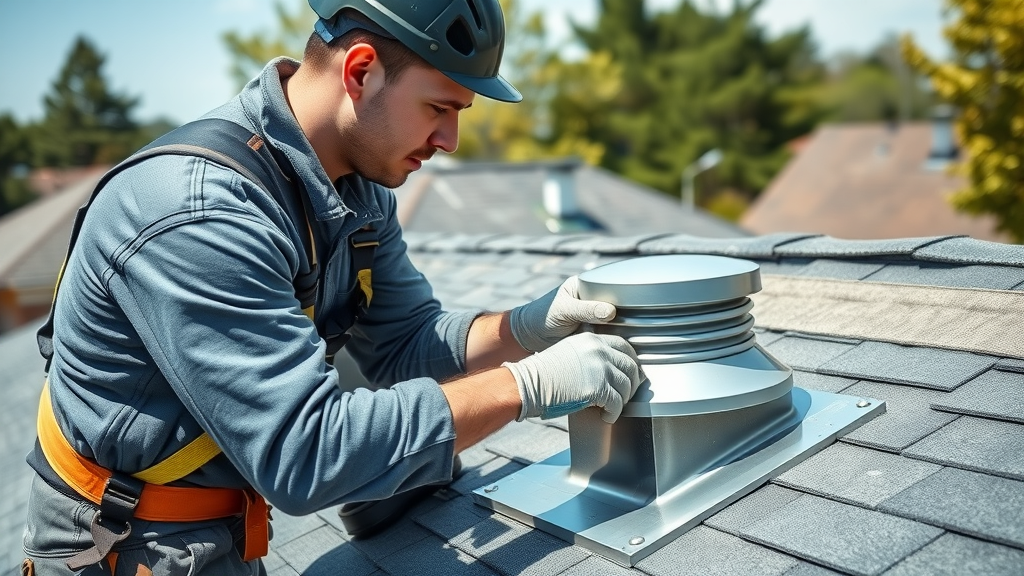
Chimneys and Step Flashing – Hidden Dangers for Roof Leaks
-
Check for missing flashings, cracked mortar, and poor sealing: Mortar deteriorates and flashing around chimneys may loosen, rust, or fall away, inviting water to sneak inside. Often, roof leaks present as wet spots near a chimney months before they’re discovered.
-
Chimney crickets prevent water pooling behind chimneys: A chimney cricket is a small roof structure built behind large chimneys to deflect water. The absence of a cricket can allow water pooling and chronic leaks after every storm.
Chimneys are notorious for generating mysterious leaks because flashing and brickwork break down with time and exposure. If your roof leak shows up near a fireplace, inspect carefully for missing metal flashings, cracked joints, and degraded mortar. Don’t hesitate to consult a professional roofer for repairs or to install a cricket if missing—it’s a critical defender against long-term water intrusion.
Skylights: Leaky Roofs Caused by Improper Installation
-
Verify that flashing extends correctly around skylight frames: Skylight leaks are almost always tied to faulty or incomplete flashing. The frame flashing must properly channel water away from edges to stop leakage even during intense storms.
-
Inspect for old or poorly installed gaskets: Over time, skylight gaskets may degrade, allowing water direct entry into the home’s structure. If you notice condensation repeatedly forming around a skylight, it’s often an early sign the seals are compromised.
Skylights add beauty and light, but poor installation or failed hardware often results in chronic roof leaks. Even a well-installed skylight may need maintenance as gaskets, flashing, or caulk age or become damaged by persistent exposure. Skilled roof repair technicians can assess and correct these leaks quickly, often without major structural work—saving you future water damage headaches.
|
Table: Common Roof Leak Locations, Causes, and Inspection Advice |
||
|
Roof Leak Location |
Common Cause |
Best Inspection Method |
|---|---|---|
|
Ceiling Stain |
Flashing Failure |
Attic above stain, probe with moisture meter |
|
Near Chimney |
Step Flashing Gap |
Visual inspection, check for missing/cracked pieces |
|
Around Vent Pipes |
Rubber Deterioration |
Examine boots, look for cracks |
|
Under Skylights |
Improper Flashing |
Assess for gaps, test during rain |
|
Edge of Roof |
Ice Dams |
Observe for ice build-up, check attic insulation |
Tracing Water Pathways in Roof Leaks: Advanced Leak Detection
Rainstorm Leak Tracking and Marking Techniques
-
Mark drips in the attic during active leaks: During a rainstorm, head to the attic and mark locations where drops appear using chalk or tape for future reference.
-
Follow water trails to the high point of wetness: Trace each water path upward—wetness usually fades as you get further from the entry point. The highest wet spot is often the true source.
-
Use chalk or tape to track the spread of leaks: Marking new drips allows you to map how leaks change in different storms, making it easier to spot patterns and recurring problem areas.
Effective roof leak detection is part art, part science, requiring experience to identify where your roof is leaking. Rainstorm tracking is an invaluable method for home and business owners. Marking every drip as soon as you notice them, and then observing how they move during different weather exposures, often provides major clues about underlying flashing gaps or shingle failures. For persistent or elusive roof leaks, it’s time to turn to more advanced tools—and, when in doubt, call a professional with specialized expertise in leak tracing.
Tools for Roof Leak Detection: Moisture Meters, Infrared Cameras, and More
-
Infrared cameras reveal hidden wet spots through insulation: These detect thermal differences that correspond to moist areas invisible to the naked eye, even behind insulation or drywall.
-
Moisture meters pinpoint concealed leaks: Pro-grade meters check for hidden wetness in wood or drywall, crucial for tracking roof leaks before rot or mold appears.
-
Dye tests help identify exterior entry points: Colored dye poured above the suspected leak can confirm if that’s the source, especially when used during dry weather or with hose testing.
Modern technology has revolutionized roof leak investigation. While moisture meters help confirm what you can’t see or touch, infrared cameras perform deep scans to track water behind thick layers of insulation or in tight attic spaces. Trained professionals often use a combination of these methods, along with strategic dye testing, to pinpoint even the most elusive water entry points—stopping damage before it worsens.
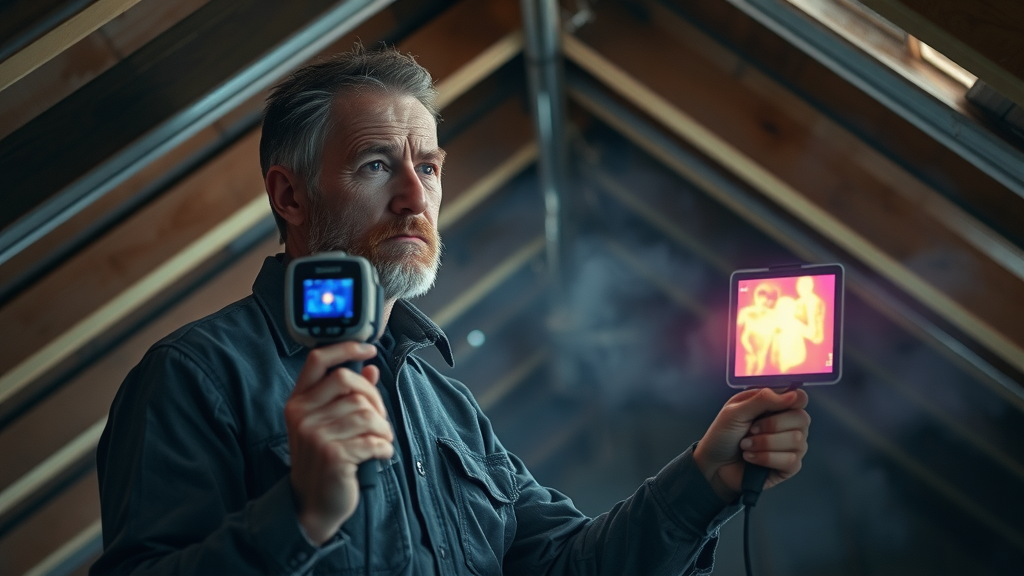
How Western New York’s Weather Fuels Roof Leaks
Ice Dams and Freeze-Thaw: Regional Leak Triggers
-
Uneven snow melt exposes poor insulation or venting: If some roof zones melt faster than others, check attic insulation and air flow. This often signals heat loss, which leads to ice dams blocking proper roof drainage and causing leaks at the edges.
-
Freeze-thaw cycles open small gaps in flashing and shingles: Our tough Buffalo winters can “flex” metal flashings or expand shingle cracks you won’t see in summer, enabling water to creep inside with every temperature swing.
Residents of Buffalo and Niagara County face a unique roof challenge: rapid changes in temperature, abundant snowfall, and freeze-thaw cycles that punish even the most durable roofing systems. Ice dams particularly plague older homes or those with attic insulation/venting issues, enabling water to back up under shingles or flashings, causing extensive leak damage right as spring arrives. Knowing where and when to look for these seasonally driven weaknesses puts you ahead of costly repairs—and makes a professional roof inspection especially valuable before or after winter storms.
Spotting Roof Leak Patterns Unique to Buffalo & Niagara
-
Observe roof after storms for new wet spots: Buffalo’s lake-effect storms can reveal sudden new leaks. Always inspect your attic and ceilings after severe weather or unseasonally warm spells that cause rapid snowmelt.
-
Check attic for daylight at roof seams: If you can see flashes of daylight through the roofline or at joints after a windstorm, it’s a telltale sign of a breach—one that may soon translate into an active roof leak if not addressed promptly.
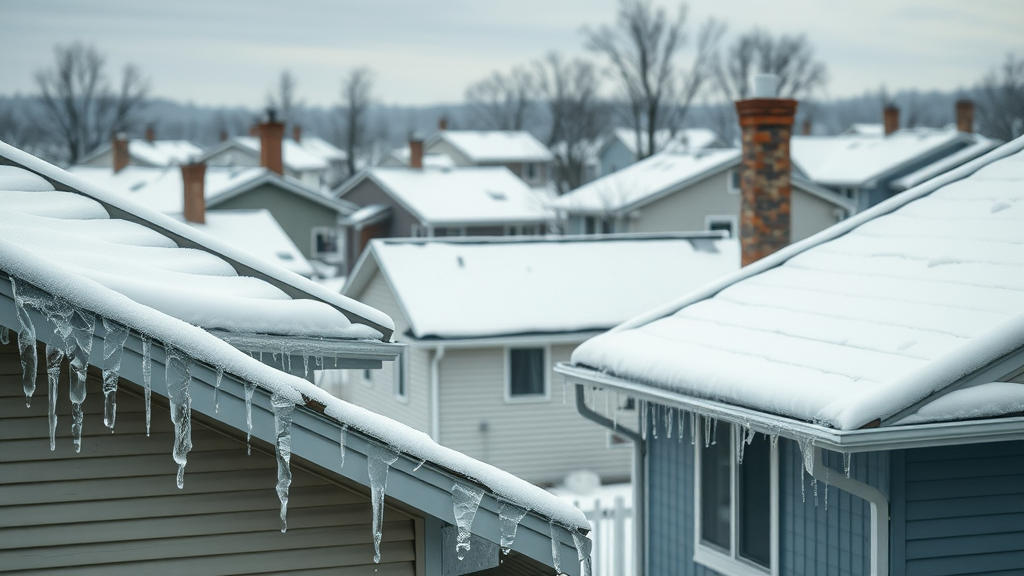
Eliminate Guesswork: Roof Leak Prevention and Proactive Maintenance
Whole-System Approach to Avoiding Leaky Roofs
-
Combine checks of insulation, ventilation, shingles, and flashing: Regularly evaluating all key roofing elements ensures issues are caught before leaks develop—not just after symptoms emerge.
-
Apply preventive caulking before leak season: Fresh caulk and roof sealant at flashing, vent, and skylight bases prevent intrusion during rain or snowmelt.
-
Schedule routine professional roof inspections: Annual visits by a certified professional roofer guarantee early detection, maximizing your roof’s useful life and protecting your investment.
True leak prevention means thinking beyond surface repairs and addressing your roof as a system. Batten down problem areas before leaks start—apply fresh caulking, keep vents clear, and upgrade insulation where needed. Stay proactive by scheduling professional roof inspections every year or after major weather events. These approaches not only stop leaky roof surprises but can extend your roof’s lifespan and maintain insurance eligibility for storm damage coverage.
Benefits of Professional Roof Leak Inspections
-
Certified experts spot issues invisible to homeowners: professional roof inspectors use advanced tools and years of experience to detect hidden roof leaks, preventing minor issues from becoming catastrophic damage.
-
Professional roof repairs are safer and longer-lasting: Don’t risk injury or incomplete fixes. Skilled, factory-trained crews complete repairs to code, using high-quality materials—delivering peace of mind and robust, long-term protection.
At Fiddler Roofing, we don’t just patch a leak—we investigate the full roofing system to deliver true, lasting protection.
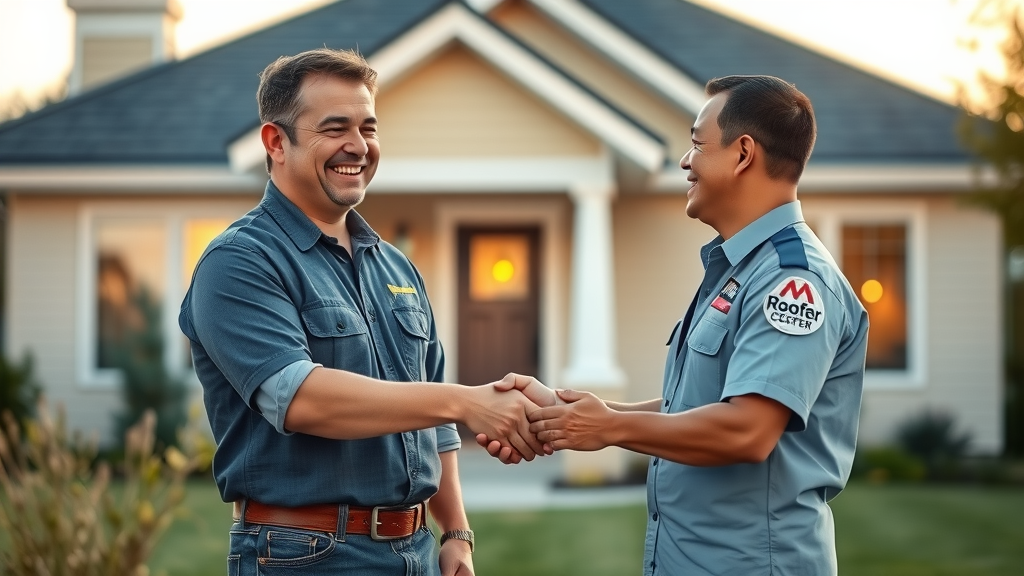
People Also Ask: Quick Answers about Roof Leaks
What do you do if your roof is leaking?
If your roof is leaking, act quickly to contain interior water by placing buckets beneath drips and moving belongings away from the problem area to minimize damage. If safe, check your attic for obvious wet spots or water stains to provide helpful info to your roofing professional. Avoid attempting risky roof repairs yourself—especially in wet conditions—and instead call a pro to ensure safe and effective fixes. Call a pro to assess and resolve the leak as soon as possible for your safety and to minimize water damage.
What to do if your roof is leaking?
When you realize your roof is leaking, document all interior and exterior symptoms: stains, damp insulation, and problem areas like vent pipes or skylights. Limit water spread inside your home, protect electronics and valuables, and avoid disturbing wet insulation (especially if attics contain vermiculite or suspected asbestos). Next, contact a professional roofer for a complete diagnostic roof leak inspection—they have the expertise and equipment to fix the issue safely and permanently.
What is the most common cause of roof leaks?
The most common cause of roof leaks is failed or aged flashing around chimneys, vent pipes, and roof valleys—not damaged shingles alone. Flashing is critical for channeling water off the roof, but over the years, it may rust, separate, or lose its sealant. Regular maintenance and early professional inspections can catch minor failures before they result in major leaks or water stains inside your home.
Is a roof leak covered by homeowners insurance?
Homeowners insurance may cover a sudden, accidental roof leak due to storm damage or a fallen branch—but generally does not cover repairs for leaks caused by neglect, poor maintenance, or worn-out roofing materials. Always inspect after major storms, handle minor repairs promptly, and keep detailed maintenance records to support any future insurance claims. Consult your policy or talk with your agent to clarify your coverage specifics.
Key Takeaways: How to Handle Roof Leaks with Confidence
-
Start leak detection inside before going onto the roof
-
Consider ventilation and insulation as possible causes
-
Fixing the source of roof leaks prevents future water damage
-
Professional roof inspections ensure lasting results
Frequently Asked Questions About Roof Leaks
-
Can all roof leaks be repaired, or is replacement needed?
Many roof leaks can be repaired if identified early, but a severely damaged or aged roof with major rot may require a full replacement by a professional roof contractor. It’s wise to have a roofing specialist assess your specific situation. -
How long does it take to locate a roof leak?
Locating a roof leak can take from 30 minutes to several hours, depending on weather, attic access, and leak complexity. Advanced moisture detection tools speed up this process for certified roofers. -
What are the signs that a repair wasn’t successful?
If water stains reappear, moldy odors return, or leaks persist during rain after a fix, the source likely remains unresolved. Persistent symptoms mean a new inspection—and likely a more thorough repair—is needed. -
Do factory-trained, certified roofers really make a difference?
Yes. Certified, factory-trained teams ensure safe, code-compliant, and high-quality repairs that protect your investment. They use better materials, proven techniques, and never cut corners with quick patches.
Get Expert Help for Your Roof Leaks – Local, Reliable, Long-Lasting
If you suspect a roof leak in your Niagara or Erie County home, don’t wait until water damage spreads. Call Fiddler Roofing—the trusted professional roof service for over 47 years, with more than 20,000 roofs completed by factory-trained, MSA-certified employees.
📞 (716) 284-1322 | 🌐 FiddlerRoofing.com
Identifying and fixing the true source of roof leaks is the difference between a quick patch and long-term protection. Stay proactive—think beyond the stain.
Once you’ve mastered the essentials of leak detection and prevention, consider how a holistic approach can further safeguard your property. Our comprehensive resource on preparing your home inside and out for roofing projects offers valuable strategies for minimizing disruption, protecting your belongings, and ensuring a smooth, stress-free roofing experience. Take the next step toward total peace of mind by exploring advanced preparation tips and expert insights tailored to homeowners like you.
To enhance your understanding of roof leaks and their prevention, consider exploring the following resources:
-
“How to Find a Roof Leak? (Guide)”: This comprehensive guide from Forbes Home offers step-by-step instructions on locating roof leaks, emphasizing the importance of early detection to prevent extensive damage. (forbes.com)
-
“Top Causes of Roof Leaks & How to Prevent Costly Damage”: ServiceMaster Restoration by Simons outlines common causes of roof leaks, such as aging materials and poor ventilation, and provides actionable prevention tips to safeguard your home. (servicemaster-restorationbysimons.com)
By delving into these articles, you’ll gain valuable insights into identifying, addressing, and preventing roof leaks, ensuring the longevity and safety of your home.
